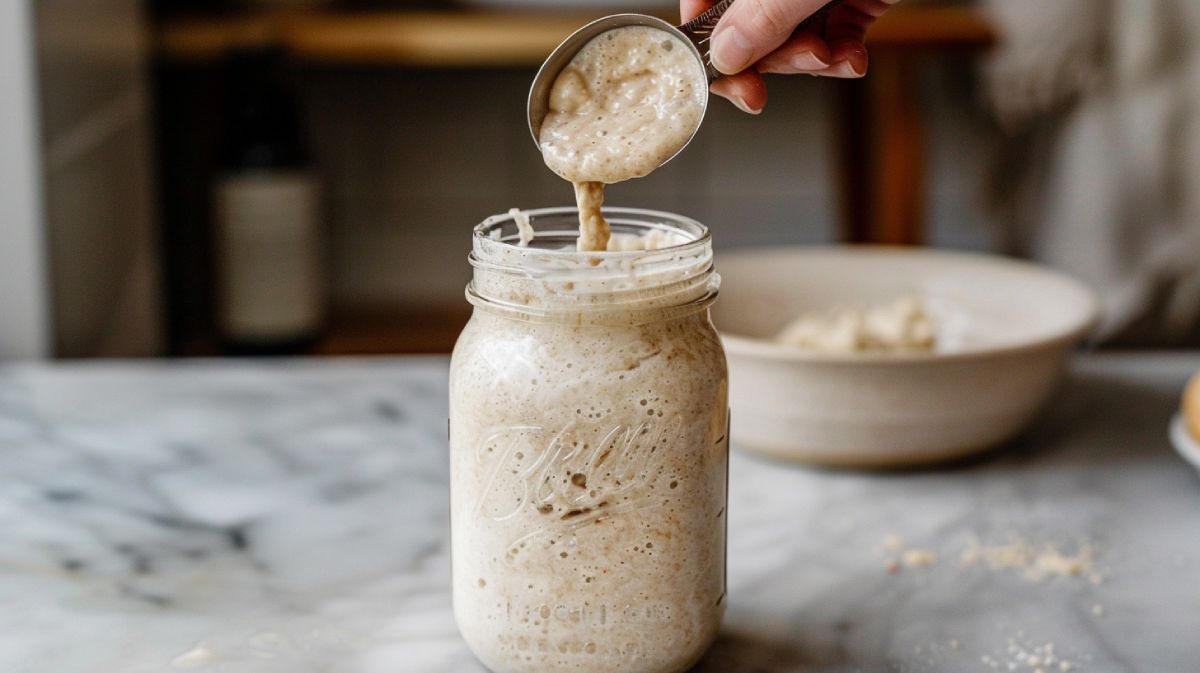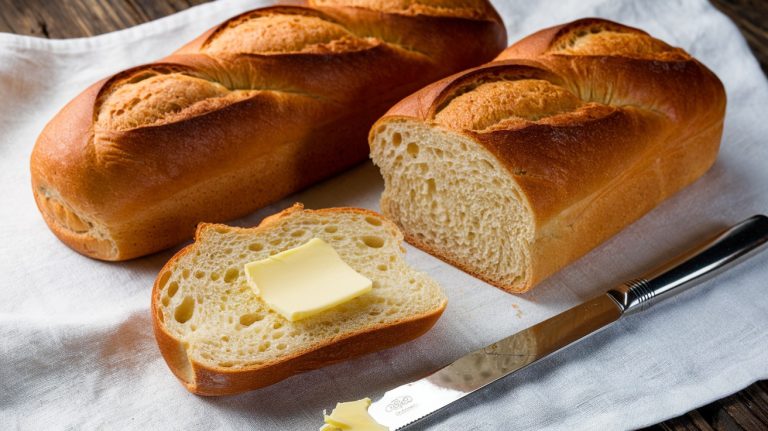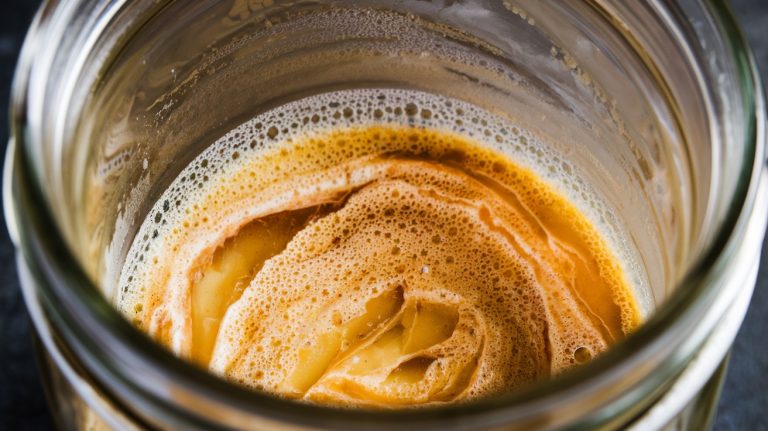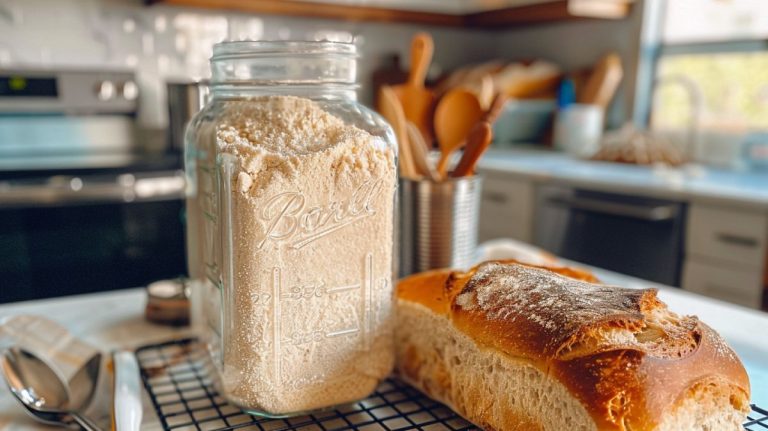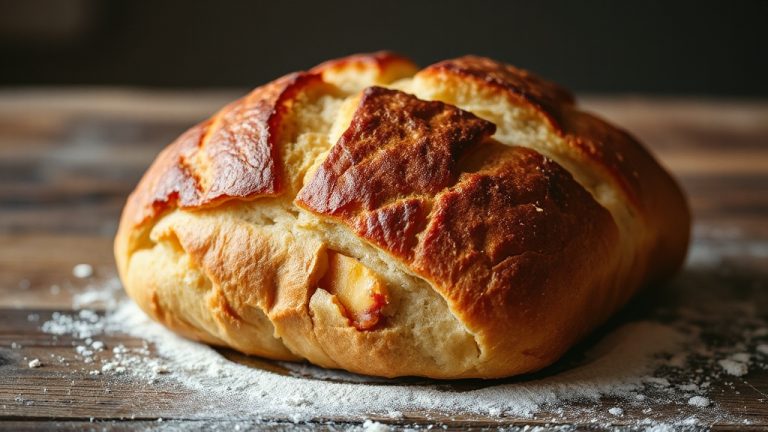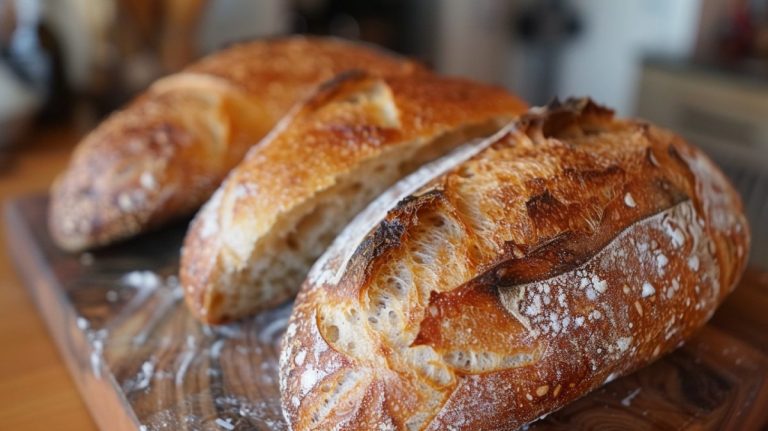Sourdough Discard Bread: Don’t Throw It Away
You can transform sourdough discard into a delightful bread that not only combats food waste but bursts with flavor. This bread’s unique fermentation process creates a soft crust and fluffy interior, perfect for all your dish creations.
Key ingredients like active dry yeast, all-purpose flour, and salt work together to enhance taste and texture. With a preparation time of just a few hours, you’ll find it easy to whip up.
Plus, you can customize it with sweet or savory additions. Interested in perfecting your technique or exploring creative uses? There’s so much more to discover.
Key Takeaways
- Sourdough discard bread minimizes food waste while utilizing leftover sourdough starter for flavorful, fluffy loaves.
- The basic ingredients include sourdough discard, active dry yeast, all-purpose flour, and salt.
- Ideal dough hydration is between 65-75% for optimal texture, starting with a sticky consistency.
- Enhance flavors by adding ingredients like cheese, herbs, or chocolate chips to cater to savory or sweet preferences.
Recipe Overview and Benefits
Sourdough discard bread is a fantastic way to turn your unfed starter into a delicious loaf while cutting down on food waste and saving time in the kitchen. This easy sourdough discard bread recipe typically takes only 3 to 4 hours from start to finish, making it perfect for your busy lifestyle.
You’ll love how incorporating a small amount of commercial yeast boosts the rise, ensuring your bread rises beautifully, even with an active starter that may not be at its peak. As the dough ferments, it develops complex flavors, enhancing both taste and texture.
The result? A loaf with a soft crust and fluffy interior, perfect for sandwiches, French toast, or grilled cheese. Plus, the fermentation process helps with digestion and improves your bread’s nutritional profile, making it a healthier option for you and your family.
Key Ingredients
In crafting a delicious loaf of sourdough discard bread, you’ll frequently rely on key ingredients that not only enhance flavor but also guarantee proper fermentation and texture. Understanding these essential components helps you achieve the perfect balance in your bread-making journey.
| Ingredient | Purpose | Notes |
|---|---|---|
| Sourdough Discard | Adds flavor and aids fermentation | Use unfed discard for 12 hours |
| Active Dry Yeast | Primary leavening agent | Helps achieve a good rise |
| All-Purpose Flour | Base for the dough | Can be substituted with bread flour |
| Salt | Enhances flavor and controls yeast activity | Essential for proper fermentation |
| Total Flour Requirement | Typically around 450 grams | Adjust based on desired hydration |
Choosing between all-purpose flour and bread flour can notably impact the texture of the dough. Bread flour offers a chewier bite and better gluten structure, while all-purpose flour provides a softer crumb. Don’t forget that salt is vital—not just for flavor but also for managing fermentation. By mastering these essential baking components, you’re well on your way to creating a delightful sourdough discard bread.
Flavor Enhancements Options
Elevating your sourdough discard bread with flavor enhancements transforms each loaf into a culinary delight that excites the palate.
Consider incorporating jalapeño cheddar for a spicy kick, enhancing its savory flavor profile and making it perfect for savory sandwiches or snacking. If you’re after something indulgent, adding cooked bacon and cheese creates a rich twist that’s ideal for breakfast or a hearty lunch.
For a touch of sweetness, try mixing in chocolate chips. This delightful contrast results in a treat suitable for dessert or an afternoon snack. Infusing your dough with orange zest introduces a bright citrus note that beautifully complements the natural tang of your sourdough discard, rejuvenating every bite.
To elevate your artisan bread, don’t forget the power of everything bagel seasoning. Sprinkling it on top before baking gives your loaf an aromatic and flavorful crust that’s hard to resist.
These flavor enhancements not only elevate your sourdough discard recipes but also turn simple homemade bread into a standout dish that you’ll be proud to share.
Experimenting with these key ingredients will surely bring excitement to your baking adventures!
Preparation and Baking Instructions
Start by mixing activated yeast with warm water. Then incorporate your sourdough discard, flour, and salt until a rough dough forms, ready for kneading into a smooth consistency.
Once you’ve achieved that, place the dough in a greased bowl and cover it, allowing it to rise for 1-2 hours until it doubles in size.
After the first dough rises, gently shape it into your desired loaf form and let it rise again for 30-60 minutes.
While the dough is rising, preheat the oven to 375°F (190°C), guaranteeing a hot environment that promotes ideal baking.
When the dough has completed its second rise, it’s time to bake. Place the shaped loaf in the oven and bake for about 45 minutes.
Keep an eye out for a beautiful golden brown color on the crust. To confirm it’s perfectly baked, check the internal temperature, which should be between 195-210°F (90-99°C).
Once baked, let the bread cool completely before slicing. This essential step helps achieve the best texture and prevents gumminess, making your sourdough discard bread truly delightful!
Tips for Success
To achieve the perfect sourdough discard bread, pay close attention to dough hydration and rising conditions.
Keeping the dough adequately hydrated guarantees a light, airy texture while creating a warm environment helps it rise properly.
Proper Dough Hydration
Achieving the perfect texture in your sourdough discard bread hinges on understanding and mastering proper dough hydration. The right hydration level is essential—too wet, and you’ll end up with a gummy crumb; too dry, and your loaf will be dense. Aim for a hydration level of about 65-75%, adjusting based on your sourdough discard and flour type.
Here are some tips for success:
- Start with a sticky and shaggy dough; this indicates good hydration.
- Reserve a bit of water during mixing to adjust as needed for your desired consistency.
- Monitor your dough during the first rise; if it’s not holding its shape, it might need more flour.
Don’t be afraid to add a bit more flour if your dough feels too wet.
Remember, achieving proper dough hydration is about finding that sweet spot where your dough forms beautifully, allowing for an airy loaf that’s bursting with flavor.
Embrace the process, and soon you’ll be enjoying perfectly textured sourdough discard bread!
Optimal Rising Conditions
Mastering proper rising conditions is essential for transforming your well-hydrated sourdough discard dough into a light and airy loaf, so keep an eye on the temperature and humidity levels in your kitchen. The best rising temperature is between 75°F and 85°F (24°C to 29°C), as a warm environment accelerates fermentation. Cover your dough with plastic wrap or a damp towel to prevent it from drying out, ensuring a smooth texture.
Aim for your dough to double in size, which usually takes 1 to 2 hours in a warm environment. If humidity is high, you may need to adjust the water content, as this can speed up rising. Be vigilant; overproofed dough can lead to a lack of oven spring and a dense loaf. Instead, slightly underproofed dough often yields better results.
Here’s a handy guide to ideal rising conditions:
| Condition | Ideal Parameter |
|---|---|
| Temperature | 75°F to 85°F (24°C to 29°C) |
| Rising Time | 1 to 2 hours |
| Covering Method | Plastic wrap or damp towel |
| Humidity Impact | Adjust water content if needed |
With these tips, you’ll be on your way to baking perfect sourdough!
Storage and Nutritional Information
Properly storing sourdough discarded bread can greatly extend its freshness, allowing you to enjoy its unique flavors and textures for longer periods. To keep your bread at its best, consider these effective storage methods:
- Use an airtight container for soft loaves to maintain moisture.
- For crusty varieties, opt for a paper bag to prevent staleness while allowing some air circulation.
- Freezing is an excellent option for longer storage, extending freshness up to 3 months.
Nutritionally, each slice of sourdough discard bread packs an average calorie count of around 181 kcal, with 38g of carbohydrates and 5g of protein.
Thanks to the fermentation process, this bread offers enhanced digestibility and improved nutrient availability, making it a healthier choice than conventional bread.
Creative Uses for Discard
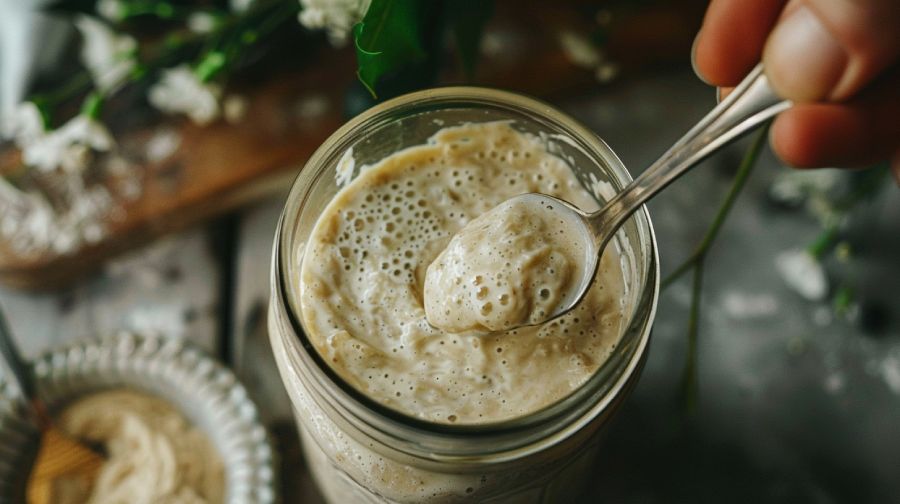
Now that you know how to store your sourdough discard bread effectively, let’s explore some inventive ways to use that leftover sourdough starter, turning it into delicious culinary creations.
One fantastic option is to whip up some fluffy pancakes. The sourdough discard adds a light, tangy flavor that makes breakfast feel special. You can also incorporate it into muffin recipes, resulting in moist and flavorful treats that help reduce food waste.
If you’re in the mood for something savory, try adding sourdough and discarding it to quick bread recipes. This gives your loaf a unique twist on traditional flavors, enhancing both texture and taste.
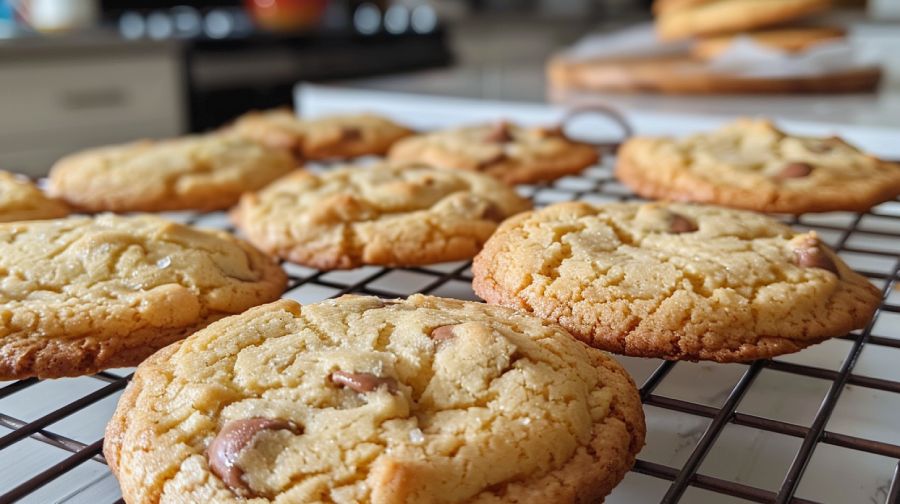
For dessert, don’t forget about chewy cookies! Mixing sourdough discard into your cookie dough lends a delightful hint of sourness that beautifully complements sweet ingredients.
Consider using your sourdough discard as a thickening agent in soups or sauces. This enriches your dish with its distinct flavor profile while minimizing waste.
With these creative ideas, you can transform sourdough discard into mouthwatering meals and treats, all while embracing sustainability in your kitchen!
Frequently Asked Questions
What Is the Difference Between Sourdough Bread and Sourdough Discard Bread?
When you compare sourdough bread to sourdough discard bread, you’ll notice that the latter rises faster due to added yeast, and it offers a milder flavor and softer texture and helps reduce food waste.
What Is Discard in Sourdough Bread?
Did you know that around 50% of sourdough starter can be discarded during feedings? Discard is the unfed portion you set aside, which enriches your recipes with unique flavors while reducing waste in your kitchen.
What Is the Easiest Way to Use Sourdough Discard?
The easiest way to use sourdough discard is by mixing it into quick breads, pancakes, or waffles. You’ll add moisture and flavor without extra fermentation, making delicious meals while reducing waste effortlessly. Enjoy experimenting!
When Can I Bake With My Sourdough Discard?
You might think you can only bake with fresh sourdough starter, but you can actually bake with your sourdough discard after 12 hours. It adds a delightful tang and unique flavor to your recipes!
Turn Waste into Wonder
Incorporating sourdough discard into your baking not only reduces waste but also enhances the flavor and texture of your bread.
You might wonder, can this simple ingredient elevate your baking game? Absolutely! Many bakers swear by the rich, tangy notes it brings to loaves.
As you experiment with this versatile discard, you’ll discover endless possibilities and maybe even develop your own signature bread.
So grab that jar of discard and let your creativity rise—your taste buds will thank you!

